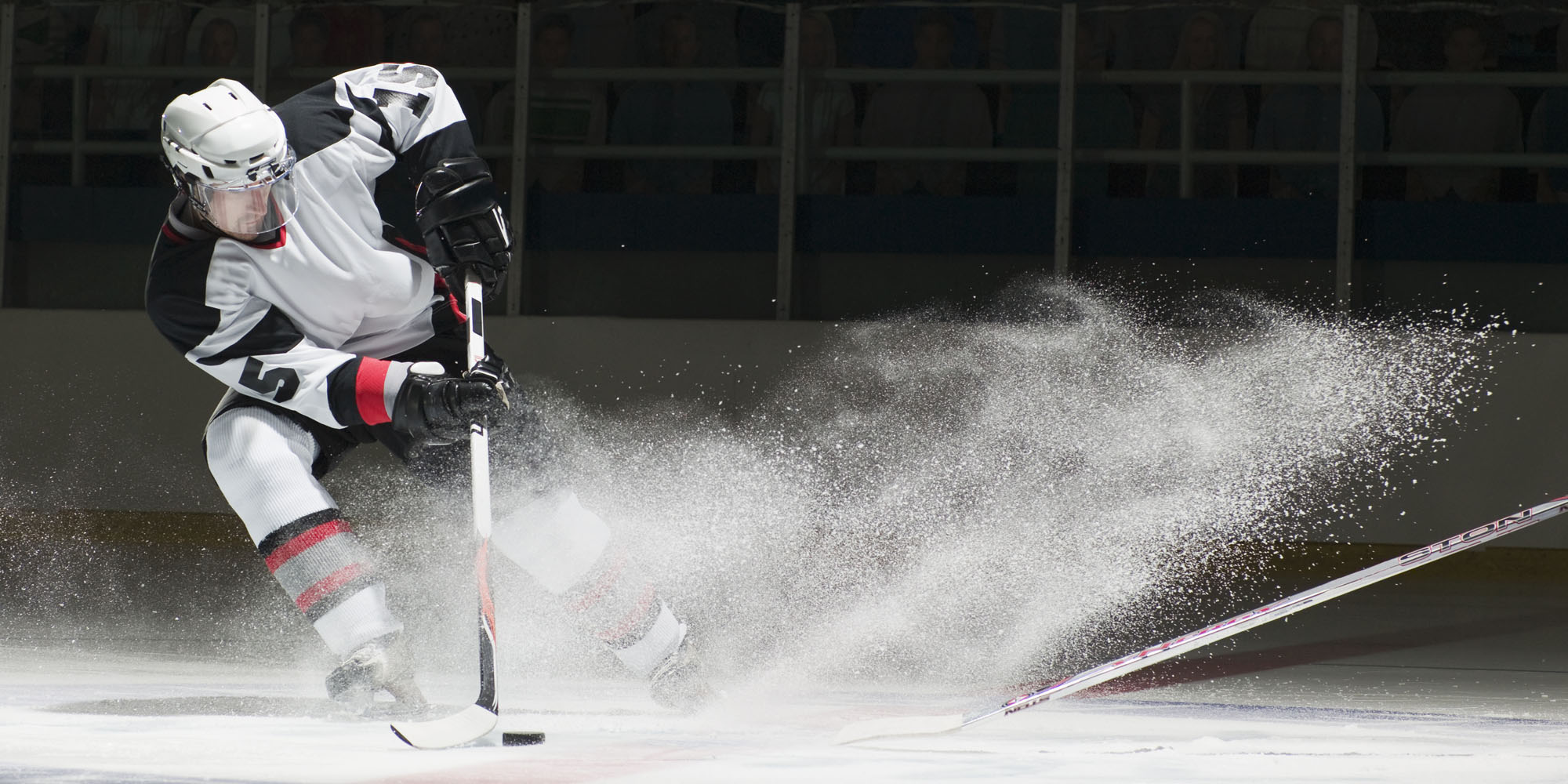Advice from Loyola Sports Medicine Physicians for Avoiding Hockey Injuries Ahead of the Beijing Olympics
February 3, 2022
Categories: Orthopaedics, Sports Medicine
Tags: Orthopaedics
MAYWOOD, IL – As Team USA prepares to take the ice in Beijing, Loyola Medicine sports medicine physicians have advice for hockey players at every level who want to stay healthy and in peak physical condition. Haemi Choi, MD, and Douglas Evans, MD, who served as team physicians for the U.S. men's and women's ice hockey teams for past World University Games held in Siberia, Spain, Turkey, Kazakhstan and Italy, have tips on avoiding injuries for athletes and their parents.
While injuries are very similar between male and female hockey players, Dr. Hamei Choi, MD, a family and sports medicine physician at Loyola Medicine, says women often experience more lower-extremity injuries to their knees and ankles than men who tend to suffer more shoulder and upper extremity injuries.
"Something we encounter often on women's teams is weaker core strength, which can lead to an increased risk of knee injuries, such as ACL and MCL tears," said Dr. Choi. "Exercising to strengthen those core muscles and always making sure to stretch prior to practices and games is a great preventative measure for women's teams."
"Because checking is allowed in men's hockey, we often see a higher incidence of shoulder injuries like shoulder dislocations and acromioclavicular (AC) joint injuries and sprains, due to the body contact and hitting the boards,” said Douglas Evans, MD, orthopaedic and sports medicine physician at Loyola Medicine.
Ankle, elbow and hip injuries, such as femoroacetabular impingement, are common in hockey players at all levels with ankles and elbows often at high risk for sprains and severe contusions.
Different player positions also run different injury risks, with forwards encountering a higher rate of concussions and goaltenders experiencing a higher rate of knee injuries. "We see a lot of overuse injuries in goaltenders, such as patellofemoral pain syndrome and hip impingement which can cause a lot of chronic pain," said Dr. Choi.
Treatments for hockey injuries can vary depending on the severity. Joint sprains may be as simple to treat as taking a short time off from the sport, but some injuries can require surgery and months of rehabilitation. "Torn ligaments, like ACLs, often require reconstruction, and shoulder dislocations and some severe sprains sometimes need surgery as well," said Dr. Evans. "Some injuries will require significant time off or away from the sport for rehabilitation."
Injuries among hockey players at any age can be preventable with the right training and coaching. "The best protection is being healthy and keeping your body strong and taking care of yourself," said Dr. Evans. "Other measures that can help include having the proper equipment, practicing so players know how to protect themselves and their opponents during gameplay, and simply abiding by the rules of the game can all help keep players on the ice."
Dr. Choi and Dr. Evans agree that the best way to stay safe on the ice is to listen to coaches, make sure equipment fits properly and take injuries seriously. "Some kids just want to play through injuries, so noticing some of the more subtle signs they might be injured is really important," says Dr. Choi. "Are they suddenly playing different than normal, or seeming confused when trying to follow instructions and signals from coaches? These might be signs to have them evaluated." Especially with concussion concerns, coaches and team officials are taught ‘if in doubt, take them out’ until they can be evaluated by a physician.
About Loyola Medicine
Loyola Medicine, a member of Trinity Health, is a nationally ranked academic, quaternary care system based in Chicago's western suburbs. The three-hospital system includes Loyola University Medical Center (LUMC), Gottlieb Memorial Hospital, MacNeal Hospital, as well as convenient locations offering primary care, specialty care and immediate care services from nearly 2,000 physicians throughout Cook, Will and DuPage counties. LUMC is a 547-licensed-bed hospital in Maywood that includes the William G. and Mary A. Ryan Center for Heart & Vascular Medicine, the Cardinal Bernardin Cancer Center, the John L. Keeley, MD, Emergency Department, a Level 1 trauma center, Illinois's largest burn center, the Nancy W. Knowles Orthopaedic Institute, a certified comprehensive stroke center, transplant center and a children’s hospital. Having delivered compassionate care for over 50 years, Loyola also trains the next generation of caregivers through its academic affiliation with Loyola University Chicago’s Stritch School of Medicine and Marcella Niehoff School of Nursing.
Established in 1961, Gottlieb Memorial Hospital is a 235-licensed-bed community hospital in Melrose Park that includes the Judd A. Weinberg Emergency Department, the Loyola Center for Metabolic Surgery and Bariatric Care, Loyola Cancer Care & Research at the Marjorie G. Weinberg Cancer Center, acute rehabilitation, a transitional care center, childcare center and fitness center. Founded in 1919, MacNeal Hospital is a 349-licensed-bed teaching hospital in Berwyn with advanced medical, surgical and psychiatric services and a 68-bed behavioral health program.
For more information, visit loyolamedicine.org. You can also follow Loyola Medicine on LinkedIn, Facebook, Instagram or X (formerly known as Twitter).
About Trinity Health
Trinity Health is one of the largest not-for-profit, faith-based health care systems in the nation. It is a family of 127,000 colleagues and more than 38,300 physicians and clinicians caring for diverse communities across 26 states. Nationally recognized for care and experience, the Trinity Health system includes 93 hospitals, 107 continuing care locations, the second largest PACE program in the country, 142 urgent care locations and many other health and well-being services. In fiscal year 2024, the Livonia, Michigan-based health system invested $1.3 billion in its communities in the form of charity care and other community benefit programs. For more information, visit us at www.trinity-health.org, or follow us on LinkedIn, Facebook, and X (formerly known as Twitter).
